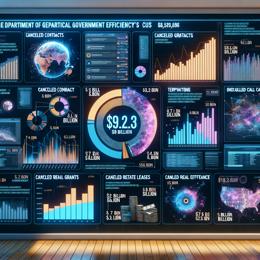Image created by AI
Central Banks Harness AI for Climate Risk Analysis, Advancing Financial Sector Resilience
In a significant development, central banks have embarked on an innovative journey that could reshape the financial sector's approach to environmental challenges. On Tuesday, top financial institutions, such as the Bank for International Settlements (BIS), the Bank of Spain, Bundesbank, and the European Central Bank, have declared a groundbreaking move. Utilizing artificial intelligence (AI), these regulatory entities are exploring a dynamic methodology for gathering and interpreting critical data pertinent to climate-related financial risks — a concern that is prominently escalating as regulations tighten across the globe.
This pioneering initiative has prompted the introduction of the Gaia AI project. This venture enables the meticulous analysis of a plethora of corporate disclosures, such as those concerning carbon emissions, the issuance of green bonds, and voluntary commitments to achieve net-zero emissions. At its core, Gaia aims to streamline the process of climate risk assessment — an undertaking increasingly critical as corporations are compelled to disclose more detailed climate-related information due to evolving global, US, and EU mandates.
The traditional approach to climate-related data assessment has often proved inadequate, hindered by a lack of uniform reporting standards and resultant disparities in public information — all scattered across an array of documents, including annual reports filled with text-heavy content, detailed tables, and elaborate footnotes. Against this backdrop, Gaia represents a paradigm shift. It simplifies the task at hand by homogenizing definitions and frameworks, providing a clearer, cross-jurisdictional lens through which financial regulators can evaluate and confront climate threats.
Gaia's efficiency is notable; incorporating new key performance indicators (KPIs) or extending its scope to additional institutions has become a more feasible and streamlined process. This AI-project circumvents the cumbersome need for analysts to manually extract information from public reports or directly engage with the institutions themselves.
The AI system scrutinized a set of 20 vital indicators and analyzed the records of 187 financial entities over five years, navigating documents predominantly in English, with some in Spanish and German. The findings underscored a trend revealing the financial industry's increasing commitment to net-zero targets and proliferation of green bond issuance, albeit the consistency of such measures varies globally.
Reflecting on the success of Gaia, central banks envisage the tool's public rollout as an open web-based service to bolster analysts' capabilities. This AI-powered approach, with its flexible design, could forge a path for more AI-assisted applications within the central banking sphere and the financial sector at large, heralding a new era of insight and preparedness for environmental fiscal impacts.










